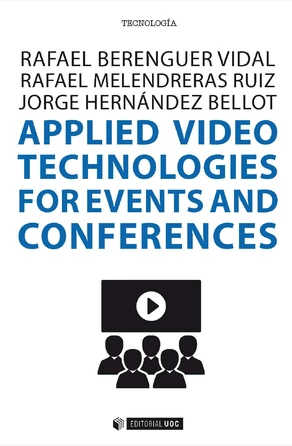The world of video technologies is an exciting field due to the vast amount of systems and applications in which the video signal is critical. Nowadays, there are many amateur and professional activities and applications in which the practical knowledge of video signals, systems, processing, displaying and broadcasting is essential. Thus, many profiles demand training in video technologies. This manual is focused on the specific environment of events and conferences. That is why the manual deals with the video technologies used in conference rooms, concerts, theatre, AV performances, etc. The contents si presented in three levels of difficulty: basic, intermediate and advanced.

